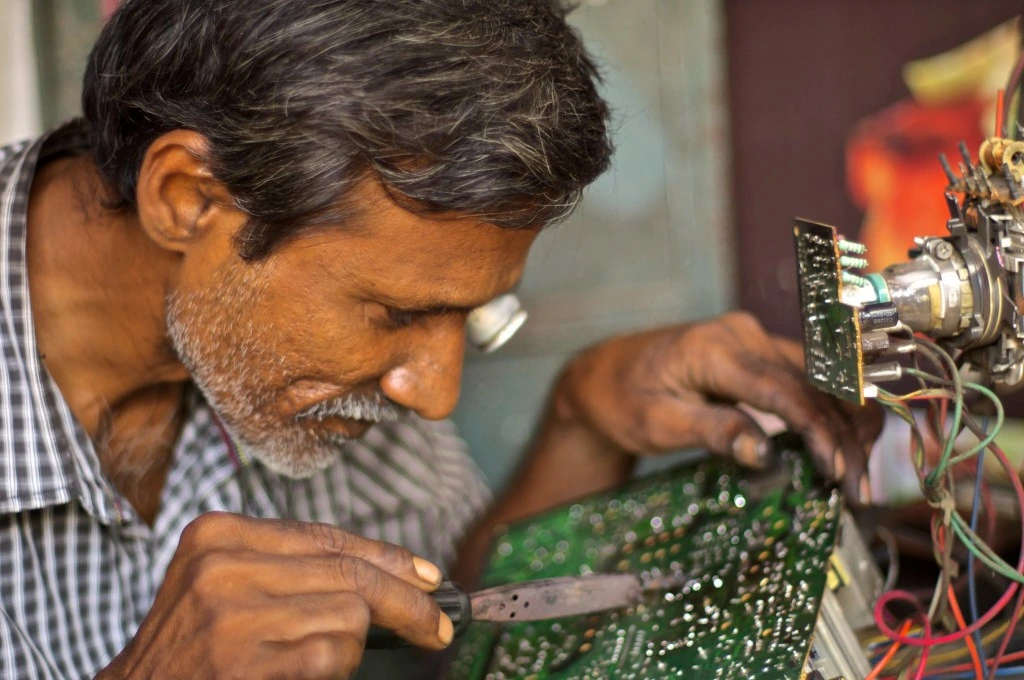Reducing E-Waste One Fix at a Time: The Power of Local Repair Shops

How Neighbourhood Repair Shops Are Helping Reduce E-Waste Worldwide
In today’s fast-paced digital world, it feels like a new phone, laptop, or gadget hits the market every few months. As technology advances, older devices are often tossed aside—sometimes even when they’re still working. This growing habit has led to a global problem: electronic waste, also known as e-waste.
But there’s hope. Neighbourhood repair shops—those small, often family-run businesses—are stepping up to make a difference. They’re repairing broken gadgets, extending the life of electronics, and helping communities take a stand against e-waste. The big question is: Can these local heroes really help reduce the global e-waste crisis? The answer seems to be a promising yes.
What Is E-Waste and Why Should We Care?
E-waste includes discarded electronics like mobile phones, computers, TVs, and home appliances. According to the Global E-waste Monitor 2024, the world generated over 59.4 million metric tonnes of e-waste in 2023, and less than 20% of it was properly recycled.
The rest often ends up in landfills or is shipped to poorer countries where it’s dismantled in unsafe conditions. Not only does this cause pollution, but it also exposes workers—sometimes even children—to toxic materials like lead, mercury, and cadmium.
E-waste also contains valuable materials like gold, silver, copper, and rare earth metals, which are lost when electronics are thrown away instead of repaired or recycled. This means we’re not just harming the planet—we’re also wasting resources.
The Rise of Throwaway Culture
One major reason for growing e-waste is what experts call the “throwaway culture.” Instead of fixing a cracked phone screen or a slow laptop, many people just buy new ones. Often, it’s because repairs are too expensive or the original manufacturer doesn’t make spare parts easily available.
Big tech companies are also known for designing products that are hard to fix, either by gluing parts together or using special screws. This practice makes it nearly impossible for the average person—or even a local technician—to open up the device and fix it.
The Comeback of Neighbourhood Repair Shops
In many cities and towns, small repair shops are making a comeback. Whether it’s fixing a broken phone screen, replacing a laptop battery, or reviving a dead washing machine, these local businesses are offering affordable, fast, and sustainable solutions.
One such shop is Fixit & Go, a local repair shop in London, where owner Ali Khan has been fixing phones and gadgets for over a decade. “People bring me devices they thought were useless. Most of the time, it’s a simple fix,” says Khan. “They leave happy, and that device doesn’t end up in the trash.”
Across Europe and parts of Asia, community-run repair cafes and tech clinics are becoming more common. These are events where volunteers help people fix their broken gadgets for free or at a very low cost. In the Netherlands, the Repair Café movement has inspired hundreds of similar events around the world, promoting a DIY attitude and bringing communities together.
Why Local Repairs Matter
- Reduces E-Waste: The most obvious benefit is fewer devices in landfills. Repairing instead of replacing keeps electronics in use longer.
- Saves Money: For consumers, fixing an old phone can be far cheaper than buying a new one.
- Supports Local Economy: Every time you visit a neighbourhood repair shop, you’re supporting small business owners and helping generate local jobs.
- Reduces Carbon Footprint: Manufacturing new electronics uses a lot of energy and resources. By extending the life of existing gadgets, we reduce demand for new production.
The Right to Repair Movement
To help repair shops thrive, many advocates are now pushing for what’s called the Right to Repair. This is a global movement that demands manufacturers make it easier for consumers and third parties to fix electronic devices.
Countries like France and the US have introduced laws that require companies to provide spare parts and repair manuals to consumers. The European Union is also working on legislation that supports long-lasting and repairable products. In fact, the EU passed a regulation in 2021 requiring that some household appliances, like refrigerators and washing machines, must be repairable for at least 10 years after purchase.
To learn more about this effort, you can visit Repair.org, a nonprofit organization dedicated to promoting the Right to Repair around the world.
Challenges Faced by Repair Shops
Despite their importance, neighbourhood repair shops face many hurdles:
- Lack of parts: Manufacturers often don’t sell spare parts to independent repairers.
- Warranty issues: Repairing a device at a local shop can sometimes void the manufacturer’s warranty.
- Training: As technology becomes more advanced, repair technicians need continuous training to keep up.
- Awareness: Many people aren’t even aware that repairs are an option or that local shops exist.
How You Can Help
Want to do your part in fighting e-waste? Here’s how you can start:
- Repair before replacing: Take your gadgets to a local repair shop before buying new ones.
- Support Right to Repair laws: Sign petitions and support politicians who advocate for consumer repair rights.
- Donate old electronics: Instead of throwing them away, donate to organizations that refurbish and reuse electronics.
- Buy repairable products: Look for brands that design products with easy repair in mind.
- Educate others: Share the message with your friends and family—every device repaired is one less in the landfill.
Final Thoughts
Neighbourhood repair shops may seem like a small piece of the puzzle, but they play a crucial role in the larger fight against e-waste. By offering affordable fixes, promoting reuse, and supporting local communities, they are quietly leading a sustainability revolution.
With more support from governments, manufacturers, and consumers, these local heroes could help turn the tide on one of the biggest environmental challenges of our time.






